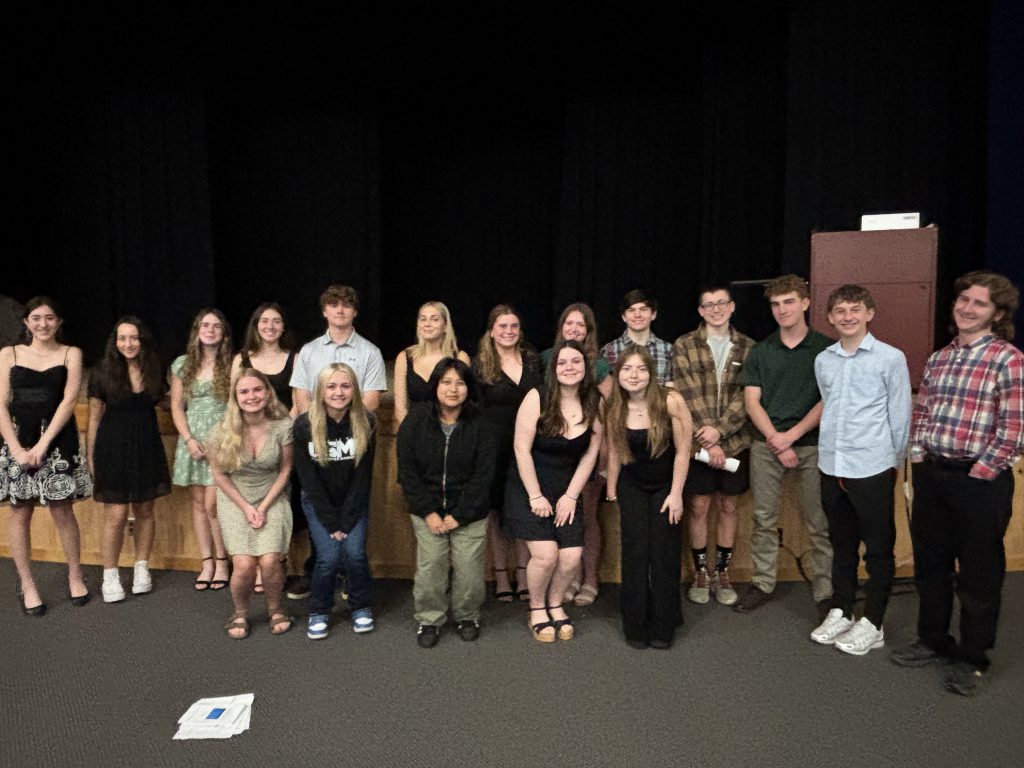Schuylerville High School’s annual Science Research Symposium celebrates the dedication, curiosity, and hard work of students enrolled in the school’s Independent Science Research program. The event showcases a broad array of student-led scientific investigations, ranging from cutting-edge cancer research to astrophysics, biochemistry, and environmental science.

The 28th annual symposium featured a welcome from Mr. David Conneally, who has led the Science Research program for 15 years and is retiring. Gracie Sisson gave an overview of the Science Research course, followed by acknowledgements from Brayden DiSiena, who expressed appreciation for the mentors, staff, and families who support students throughout their multi-year research journeys.
2024-25 research projects (ongoing and complete) include:
- Michael Becker examined Rubisco and carbon fixation in algae, an effort with implications for agricultural innovation.
- Finn Connelly used numerical simulations to quantify bioluminescent light in ocean waves, contributing to ecological monitoring.
- Lara French explored the relationship between celiac disease symptoms, mental health, and gluten-free diet adherence.
- Charlie Hughes investigated parabolic dune formations in Waterloo, NY, analyzing geological features shaped by glacial retreat.
- Olivia Crowley presented her research on how fibronectin’s EDA domain may suppress breast cancer cell proliferation.
- Alexa Prouty took a creative route, exploring atomic properties through sound synthesis in her project “Atom Music.”
- Finna Bain examined the long-term effects of tetrabenazine for chorea management in Huntington’s Disease patients.
- Kyla Brady studied how Indian instrumental music influences milking behavior and production in dairy cattle.
- Kaitlyn Cleveland analyzed the connection between brain abnormalities and violent behavior in mentally ill offenders.
- Lilah Crowley researched the inhibition of Ref(2)P in fruit flies as a model for neurodegenerative disease progression.
- Sarah DeLaCruz investigated the effects of PCB-contaminated Hudson River sediment on cucumber growth and soil quality.
- Brayden DiSiena tested graphene oxide surface modifications to improve removal of PFAS contaminants from river water.
- Noah Eydelson studied the first direct detection of gravitational waves from a binary black hole merger.
- Lucia Harwood evaluated how home visitation programs affect CPS-involved families with a focus on maternal depression.
- Alex Hill explored how educational approaches impact creativity in dyslexic and non-dyslexic children and teens.
- Ethan Meskill conducted a comprehensive search of stellar flares using the Kepler light curve database.
- Madelyn Montgomery validated a nutritional intervention aimed at improving sleep quality and onset latency.
- Lindsey Ramirez-Navez examined the use of Sotatercept in high-risk pulmonary arterial hypertension patients.
- Gracie Sisson investigated age-graded pathways into crime among incarcerated women through a multi-site study.
- Parker Waldron analyzed the rising prevalence of ulnar collateral ligament surgeries in professional baseball players.
For a full list of abstracts, click here.
About Independent Science Research at Schuylerville
The Independent Science Research course begins in a student’s sophomore year and provides a unique opportunity to experience science beyond the classroom. Students select a research topic of personal interest and build relationships with professionals in the field, eventually working under the guidance of a mentor. The program emphasizes the scientific method and encourages hands-on inquiry, literature review, data analysis, and formal presentation skills.
Over the course of three years, students may earn up to 12 college credits through the University at Albany’s University in the High School Program. Participants also receive Regents credit and may present at regional and national competitions. Students’ work exemplifies the program’s mission: to foster independent thinkers equipped with the skills to pursue scientific questions in meaningful ways. Following Mr. Conneally’s retirement, Living Environment and Science Research teacher Emily Flores will take over the program in the 2025-26 school year.